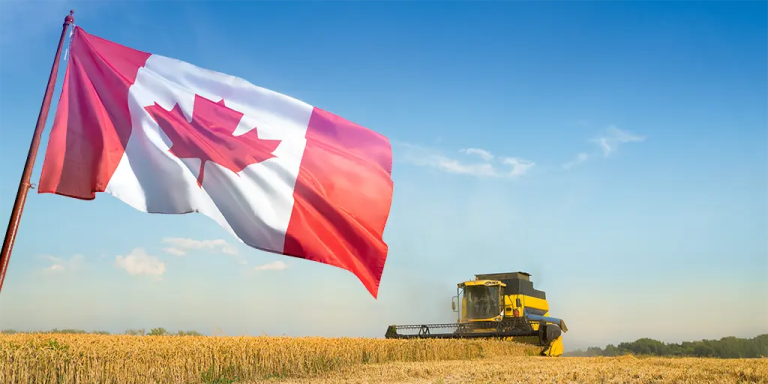Vijay Jayaraj
When we gaze upon the verdant fields of Saskatchewan or the salmon-rich waters of British Columbia, it's easy to forget that just 12,000 years ago, much of Canada was under miles of ice.
The Canada we know today—a mosaic of thriving ecosystems and abundant farmland—is the product of a remarkable transformation that began with the waning of the last glacial advance and the warm embrace of the Holocene interglacial period.
The birth of Canadian agriculture
Starting about 11,000 years ago, Holocene warmth and the retreat of massive continental glaciers enabled people to farm. Humanity transitioned from a nomadic hunter-gatherer society to a more sustainable way of life with permanent settlements.
North America was no different, with Canadian flora and fauna thriving in the newfound warmth. Studies of spatiotemporal patterns of Holocene climate change in the Canadian Arctic show that temperature distributions are quite complex with changes at the global level.
In fact, much of northern Canada experienced the horrific Little Ice Age in the 1500s, which threatened to once again submerge the continent's vegetation beneath the ice. Thankfully, the Earth resumed natural warming in the 1700s.
Particularly during the 20th century, significant climate warming has had a profound positive impact on Canada's landscape and agricultural potential.
Recent increases in temperatures have pushed the boundaries of farmland northward, extending the growing season and opening up new possibilities for farming. Crops such as corn, once considered impossible to grow in many parts of Canada, are now booming.
The Government of Agriculture and Agri-Food Canada (AAFC) reports: “Warmer temperatures and longer frost-free periods can improve productivity across the board, especially in northern regions and the southern and central prairies.” In addition, it can ensure higher survival of young animals efficiency while reducing energy and livestock feed costs.
This climate change, combined with anthropogenic increases in atmospheric carbon dioxide concentrations (which promote photosynthesis in plants) and advances in agricultural technology, has caused the average size of Canadian farms to double over the past 50 years.
Provide better growing conditions for a variety of crops
While traditional staples like barley and canola remain important, they are now joined by an impressive range of products, such as world-class apples, cherries and wine grapes from the Okanagan Valley and melons from Newfoundland.
Canada is now the world's largest producer and exporter of lentils, a niche crop popular with South Asian immigrants in Canada's agricultural regions, according to the Food and Agriculture Organization (FAO). Experimentation with new crops and technologies has been a driver of growing diversity and productivity in Canadian agriculture.
The AAFC's latest report said, “Production of all major field crops (2024-2025) is expected to increase by 1.8% year-on-year and 2.4% above the previous five-year average.”
Higher crop yields mean more efficient livestock farming. Despite export disruptions caused by bovine spongiform encephalopathy (mad cow disease) between 2003 and 2015, the value of Canadian beef and veal exports more than tripled between 2013 and 2022.
From 2018 to 2028, the total agricultural output value is expected to nearly double.
Even those who subscribe to false apocalyptic visions of climate change acknowledge that “regions of Canada previously constrained by shorter growing seasons may find new agricultural opportunities, such as double-cropping or growing previously unviable crops.”
It is undeniable that human civilization has benefited greatly from the warming of the last century and the early Holocene. This reality is very evident in Canada, as areas once unsuitable for agriculture are now among the most productive in the world.
Canadian farmers are grateful for longer growing seasons and more abundant atmospheric carbon dioxide, which better feeds plants. So should the rest of us. After all, according to patterns in geological history, Earth's current interglacial period is coming to an end, and miles-thick glaciers will be resurrected within the next millennia.
This review was first published in the Toronto Sun on October 13, 2024.
Vijay Jayaraj is a scientific research assistant carbon monoxide2 allianceArlington, Virginia. he He holds a master's degree in environmental science from the University of East Anglia, UK, a postgraduate degree in energy management from Robert Gordon University, and a bachelor's degree in engineering from Anna University, India.
Relevant
